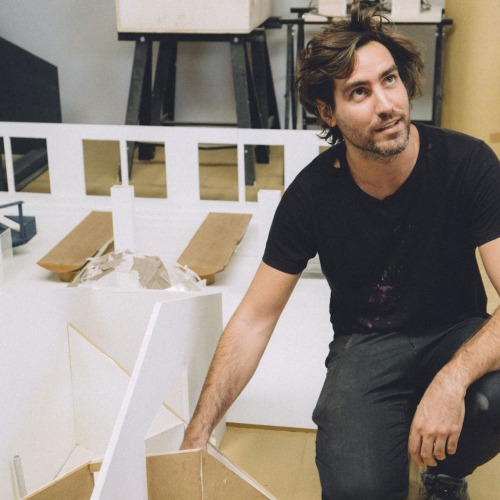Santomá
Guillermo Santomá is an architect/designer living and working in Barcelona. Born in 1984, after get a MA in design from Elisava Barcelona, Santomà attracted attention to his work after his total transformation of Casa Horta – an architectonic, artistic intervention in a traditional horta-house from the beginning of the 20th century. Santomà places himself somewhere in-between architecture and design and creates complete environments for his work to act in.
Since construction, Santomà works in different formats that move between design, architecture, sculpture and scenography. It uses simple mechanisms to alter familiar objects in a constant process of deformation creating complete environments. His work denotes an interest in the systematic transformation of the ways of objectifying, organizing, analyzing and, therefore, of transmitting. He could be described as being interested in how a space is affected by the production of elements vaguely similar to furniture as well as by chromatic interventions.
It seems that the force that motivates his interest in the architecture is driven by the question: how does the social space of a reactionary mind look? The question is a sensitive one because we tend to ascribe the practice of art to liberal values, even though there are plenty of historical examples of artists who by no means share such principles. Yet Santomà adds another twist: the artist is not only interested in how politics shapes character and how character shapes taste, but also how, then, taste shapes the body. Do ultra-conservatives sit in chairs similar to the liberals?
Since construction, Santomà works in different formats that move between design, architecture, sculpture and scenography. It uses simple mechanisms to alter familiar objects in a constant process of deformation creating complete environments. His work denotes an interest in the systematic transformation of the ways of objectifying, organizing, analyzing and, therefore, of transmitting. He could be described as being interested in how a space is affected by the production of elements vaguely similar to furniture as well as by chromatic interventions.
It seems that the force that motivates his interest in the architecture is driven by the question: how does the social space of a reactionary mind look? The question is a sensitive one because we tend to ascribe the practice of art to liberal values, even though there are plenty of historical examples of artists who by no means share such principles. Yet Santomà adds another twist: the artist is not only interested in how politics shapes character and how character shapes taste, but also how, then, taste shapes the body. Do ultra-conservatives sit in chairs similar to the liberals?
+
-
-
NameGuillermo Santomá








